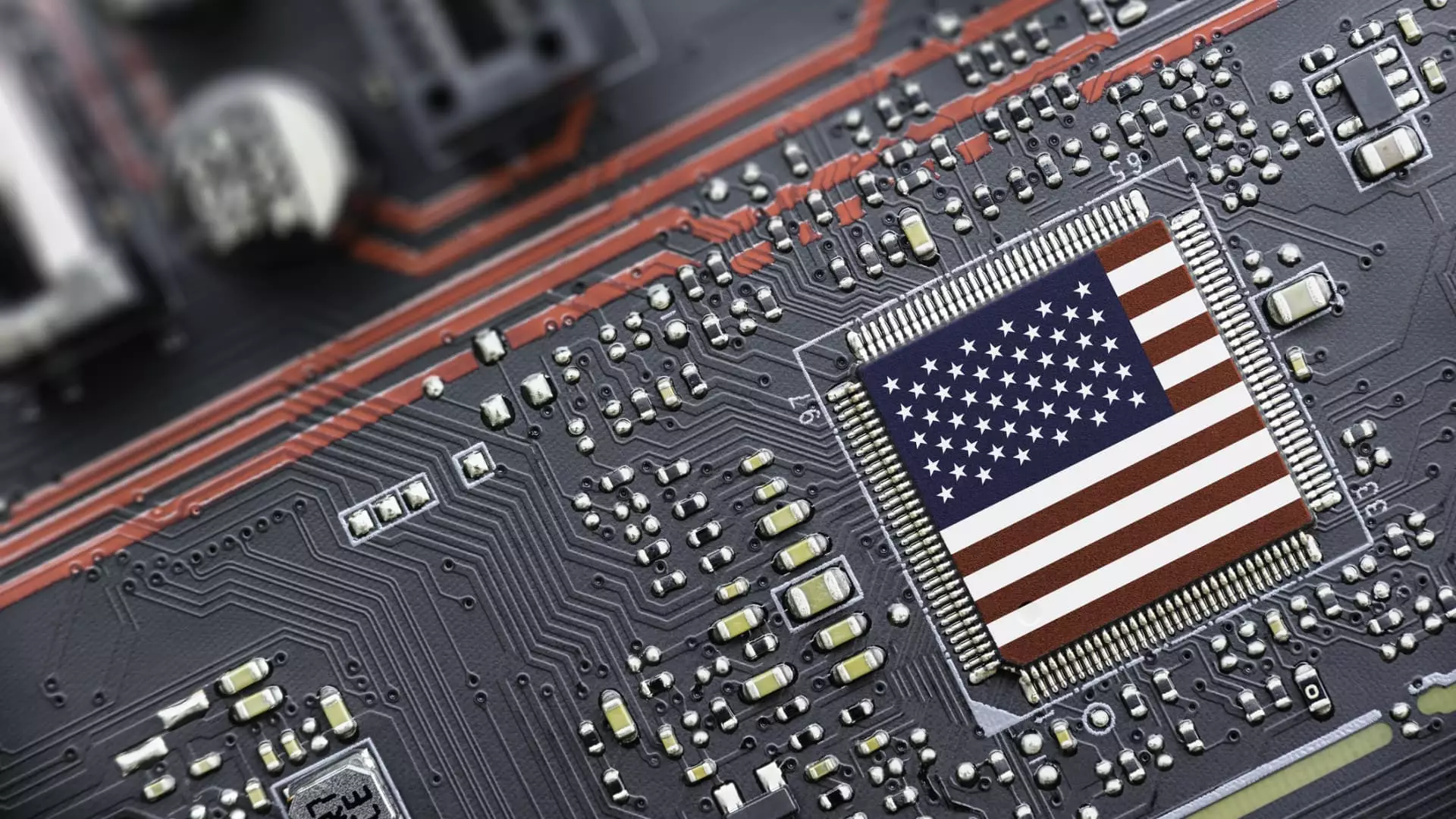On the surface, President Trump’s recent tariff exemption for semiconductors seems like a gift to the beleaguered chip industry. However, the turbulent response from investors paints a far more troubling picture. The notion that these exemptions would bring relief is merely superficial; they do little to dispel the growing skepticism surrounding the entire industry. Companies like Nvidia and Micron are reeling, not just from the uncertainty about future tariffs but from an existing storm of economic pressures that threaten to capsize their profitability.
What many fail to grasp is that these exemptions are more of a delay than a definitive resolution. Investors are well aware that the prospect of looming semiconductor-specific tariffs remains an undeniable specter—an unseen shadow that continues to loom large. Reports of potential 10% tariffs leave a bitter taste, as companies adapt to the whims of an unpredictable regulatory landscape. The very fabric of the market is being tugged at by economic threads that don’t promise a smooth or even trajectory; they lay bare a disquieting reality about demand that investors can hardly overlook.
Demand Destruction 101
Perhaps the most sobering factor in this equation is the looming threat of demand collapse. It’s not merely a matter of individual chips being taxed; it’s about the value chain that connects those semiconductors to finished goods. The reality is that many chips find their way into devices like laptops, smartphones, and gaming consoles. The staggering figure of $200 billion in computing equipment, alongside $114 billion in wireless devices facing potential tariffs nearing 40%, is an ominous harbinger of reduced consumer spending.
Such a demand contraction strikes at the core of the semiconductor sector’s vitality. Companies like Nvidia, whose products are expected to be utilized across various sectors, could find themselves staring down the barrel of excess supply. As orders from significant players like Alibaba surge, they may seem to thrive in the short term; yet, the dawning realization that the American consumer could inevitably pull back is akin to a creeping malaise.
The China Conundrum
Adding further complexity to this intricate web is the situation with China, where tech companies are stockpiling Nvidia’s H20 AI chips in anticipation of potential supply chain restrictions. This raises critical questions about stockpiling strategies and future capacity management. If export limitations come to pass, Nvidia could be facing a perfect storm: a backlog of unsold chips and a substantial miscalculation regarding its manufacturing capabilities. This boisterous wave of orders may seem like a boon—but it easily transforms into a snare, holding firms back from nimble adaptation in a volatile market.
The U.S. administration’s unclear stance on AI export controls only exacerbates this situation. If guidelines laid out by the Biden administration come into play and create friction, firms that were once seen as market leaders will find themselves trapped between competing interests. The inability to navigate this terrain with clarity is disheartening, and adds a layer of dysfunction that companies like Nvidia cannot afford to ignore.
A Cloud Over the Market
When the tech giants contemplate pruning their growth initiatives, the implications could not be graver. Microsoft’s recent decision to suspend or delay critical data center projects globally signifies a shift that reverberates through the entire sector. That an industry once buoyed by rapid advancements could pivot towards austerity reflects a darkened outlook for not just the chip makers but also for ancillary markets that depend on them.
A decline in demand for AI services, considered a locomotive for growth, presents ramifications that reach deep into market dynamics. Companies such as CoreWeave experiencing significant stock dips serve as a harbinger, indicating a chilling recognition that growth projections might not only be overheated but severely miscalculated. The collective psyche of investors, which once propelled these stocks, now appears shaken, revealing an unsettling undercurrent of distrust in the long-term viability of growth narratives in an era of impending economic slowdown.
Embracing the Reality
The protectionist policies, while ostensibly designed to shore up domestic production, may have unintended consequences that overshadow their intended benefits. American giants like Intel may find glimmers of opportunity as production reshuffles back to domestic shores, but the immediate repercussions of weakened demand could cast a long shadow over the industry. Addressing macroeconomic variables, inflationary pressures, and evolving consumer behavior will be crucial in navigating these turbulent waters, and the response from chip manufacturers must be swift and accommodating to survive in this landscape.

